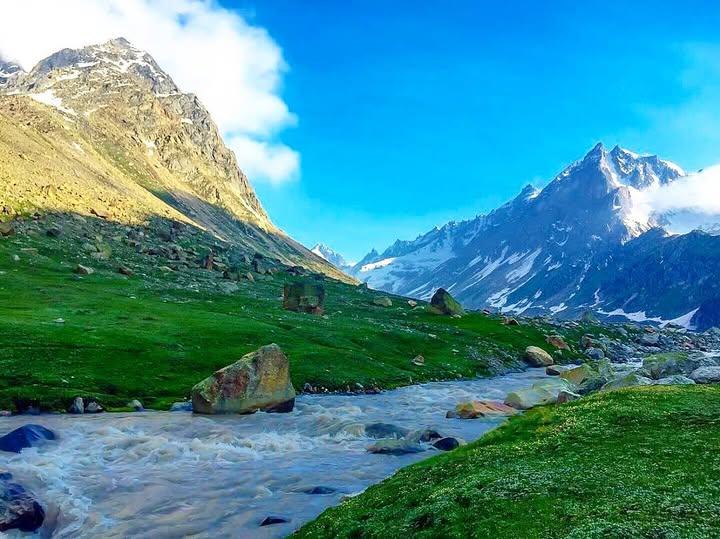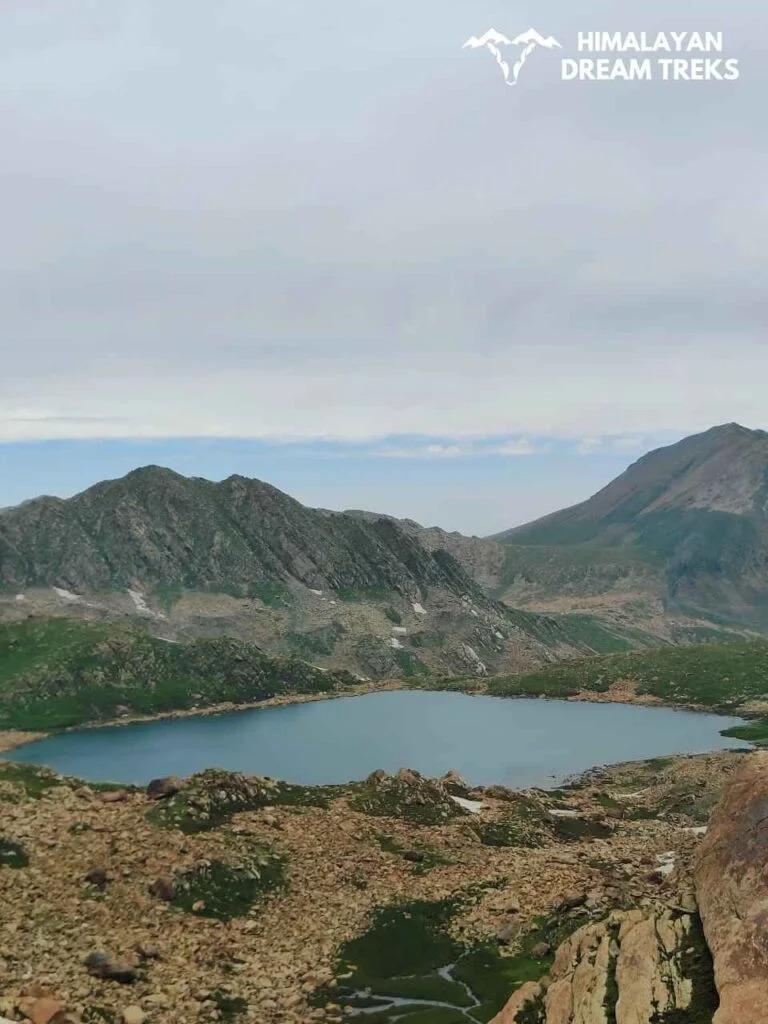Notifications

The Pir Panjal Range stands as one of the most underrated and pristine trekking destinations in India. Nestled in Jammu and Kashmir, this range offers an offbeat, exhilarating trekking experience through dense forests, alpine meadows, crystal-clear lakes, and towering peaks. With elevations soaring up to 13,730 feet, the Pir Panjal Trek is an adventure that takes you through some of the most enchanting landscapes of the Indian Himalayas.

The Pir Panjal Range forms part of the Lesser Himalayas and is the largest mountain range in this region. Stretching across Jammu and Kashmir, and continuing into Himachal Pradesh, the range covers a staggering 320 km. Its towering peaks, sub-alpine lakes, and expansive meadows remain largely unexplored by the masses, making it an ideal destination for trekkers looking for an off-the-beaten-path adventure.
The name 'Pir Panjal' refers to the range's role as a natural divide between the Kashmir Valley and the Jammu Hills. Known for its dramatic landscapes and difficult-to-reach passes, it offers a rugged yet beautiful trekking experience. The trek takes you deep into the heart of the range, allowing you to witness untouched nature in its purest form.
1. Dense Forests and Tranquil Surroundings The trek begins with an enchanting walk through dense coniferous forests. As you hike, the sound of cicadas and birds fills the air, making the forest seem alive with energy. The fresh scent of pine and oak trees adds to the tranquility of the surroundings. The contrast of the forest's stillness with the occasional rustling of wildlife provides a perfect introduction to the diverse landscapes of the Pir Panjal Trek.
2. Alpine Meadows and Margs One of the most unique features of the trek is the passage through vast alpine meadows, known locally as Margs. Over the course of the trek, you will pass through four major meadows – Panjdhari, Khuan, Byad, and Sarota. These meadows offer pristine beauty and are perfect spots for camping. Imagine waking up to clear skies and expansive green fields surrounded by snow-capped peaks. The meadows of Pir Panjal are comparable to the famous Bugyals of Uttarakhand or the meadows of Spiti in Himachal Pradesh, offering a rare glimpse of nature at its best.
3. Pristine Alpine Lakes The Pir Panjal Range is home to several breathtaking alpine lakes. On the trek, you will witness a total of 12-14 freshwater lakes, each with its own unique charm. These lakes vary in color, from oceanic blue to turquoise and teal, creating a vibrant display as you trek through the region. Pir Panjal Lakes offer an unparalleled visual experience, with their stunning views and serene surroundings. The climb to mountain passes such as Khabi Ki Gali Pass and Kaldachni Pass gives trekkers the opportunity to witness these lakes from different vantage points.

4. Jaw-Dropping Passes and Spectacular Views The trek takes you through challenging mountain passes, including Khabi Ki Gali Pass and Kaldachni Pass, which act as natural vantage points for some of the most jaw-dropping views of the Pir Panjal Range. The snow-covered peaks of Jammu & Kashmir, the serene lakes below, and the sprawling meadows create a picture-perfect landscape. Each pass provides an opportunity to catch your breath and take in the grandeur of the Himalayas.
5. Immersive Cultural Experience The trek is not just a physical adventure but a cultural journey as well. The starting point of the trek is Chandimarh, a quaint village in the Poonch District, about 26 km from Poonch town. This village gives trekkers a glimpse into the simple, peaceful life of the locals. The trek also passes through villages with traditional Kashmiri architecture, offering insights into the region’s rich heritage and culture.
The Pir Panjal Lakes Trek spans 7 days and covers a distance of approximately 52 km. Here’s a breakdown of the itinerary:
Day 1: Arrival at Base Camp (Chandimarh)
Day 2: Chandimarh to Panjdhari Meadow
Day 3: Panjdhari to Khuan Meadow
Day 4: Khuan to Byad Meadow
Day 5: Byad to Sarota and the First Glimpse of the Lakes
Day 6: Exploring the Lakes and Passes
Day 7: Return to Base Camp
The Pir Panjal Trek is best done during the summer months, from late May to early October. During this period, the weather is relatively stable, and the trekking conditions are ideal for exploration. The weather in the region can vary, but temperatures generally range from 5°C to 20°C during the summer. Nights may get colder, so it's important to pack appropriately.
If you're looking to experience the trek during the snow season, the Pir Panjal Lakes Trek is also an excellent choice during winter, from December to February, when the lakes freeze over and the landscape is covered in a thick blanket of snow.
The Pir Panjal Trek is rated as moderate to difficult, making it suitable for experienced trekkers who are familiar with challenging terrain. The trek involves boulder fields, scree sections, and steep ascents, which require good physical fitness and stamina. If you're a seasoned trekker looking to push your limits, this trek is ideal. Himalayan Dream Treks ensures that trekkers are well-prepared with the necessary gear and guidance for a safe and enjoyable journey.
The Pir Panjal Range is rich in biodiversity, with a variety of flora and fauna that can be found along the trail. The dense forests are home to wildlife such as Himalayan black bears, musk deer, leopards, and several bird species. The meadows are adorned with wildflowers in spring and summer, including alpine flora like primulas and gentians.
The trek starts from Chandimarh, which is about 26 km from Poonch headquarters. To reach Poonch, you can take a flight to Jammu and then drive to Poonch by road. From Poonch, you can take a jeep or cab to reach Chandimarh, where the trek begins.
Alternatively, you can take a bus from Jammu to Rajouri, followed by a cab to Chandimarh.
The Pir Panjal Lakes Trek is a hidden gem in the Indian Himalayas, offering a unique opportunity to explore the lesser-known side of Jammu and Kashmir. With its dense forests, alpine meadows, pristine lakes, and challenging mountain passes, it is a trek that promises not only adventure but also the chance to immerse yourself in the untouched beauty of the region.

